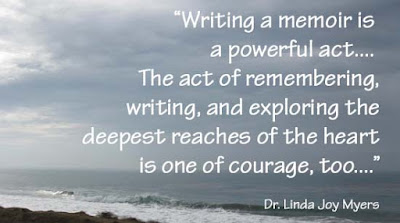Recently
we studied your memoir’s Front Matter, and this week we’ll begin looking at its
Back Matter (or End Matter)—those pages that appear after the Main Body of your
book.
Often
I read a book’s Back Matter before reading the story itself.
Do
you?
I’m
drawn to the Back Matter because after reading it (as well as the Front
Matter), I feel a connection to the author and have a better grasp of the story
I will soon enter.
Many
if not all Back Matter components are considered optional. This week we’ll look
at the first two:
Acknowledgments:
Most
people want to publicly thank those who helped them write their books.
But not
everyone advocates including Acknowledgments. That seems strange, I know.
Mick Silva
writes this about Acknowledgments: “I know many people who are against
acknowledgment pages. But to me, . . . acknowledgments
are the best part of a book. Teamwork, camaraderie, and sacrificial love get
poured into an author and their work, and it’s often on wonderful display in
the acknowledgment pages. It’s a testament to all that goes into a book. . . .”
Mick Silva, Higher Purpose Writers.
I agree,
Mick, I agree!
Judith
Briles offers a long list of those you could include in your Acknowledgments: Click on Who Are You Going to Acknowledge in Your Book?
Tucker Max
also offers insightful tips and examples in his post, How to Write Your Book Acknowledgments.
Author Bio
(“About the Author”):
In
my opinion, an Author Bio (“About the Author”) is a must. Usually the Author
Bio is in the Back Matter, but occasionally you’ll find one in a book’s Front
Matter. I favor placing it in the Back Matter.
You’ll
write your Author Bio in third person. For example: “Jane Doe has written _____
and ______ . . . . She lives in ___________. . . .”
If
you’re a speaker, and/or if you’ve written other books, newspaper/magazine
articles, chapters for anthologies, or guest blog posts, include that in your
Author Bio.
Also
tell readers what makes you uniquely qualified to write your memoir. For
example, in my Author Bio in Please, God, Don’t Make Me Go: A Foot-Dragger’s Memoir, I wrote that I’d spent three years working in South America which,
you’ll no doubt agree, qualifies me to write a memoir about living there. I
also included info about my other memoir, Grandma’s Letters from Africa,
stating that I worked as a missionary journalist and that the publisher gave
the memoir three awards.
If
you haven’t previously published anything, don’t worry—just skip that aspect of
your Author Bio. Joel Pitney offers this advice for first-timers: “Some authors
don’t feel like they have enough to say about themselves; but just the fact
that you’ve written a book makes you important enough to have at least a 3-4
line bio! Think creatively about what elements of who you are might be of
interest to readers; don’t be shy!”
Consider
including your education, background, past experiences, and interests, especially
if they pertain to your memoir and lend credibility.
In
my most recent Author Bio, I also included links to Facebook Pages for my two
memoirs, followed by “In addition to speaking, Linda teaches the craft of
writing memoir to community and church groups and through her blog, Spiritual
Memoirs 101 at https://spiritualmemoirs101.blogspot.com.”
Include
links for your newsletter, as well as other social media info if you’re
comfortable doing so.
And
be sure to include a professional-quality photo of yourself.
For
additional tips on how to write your Author Bio, click on the following:
4 Elements to Craft Your Author Bio
How to Write a Killer Author Bio
For now,
work on your Acknowledgments and Author Bio, and come back next week when we’ll
cover additional components of your memoir’s Back Matter.



